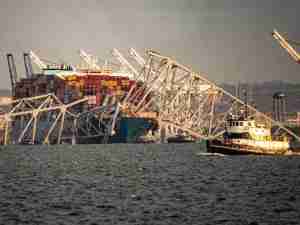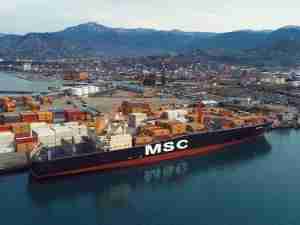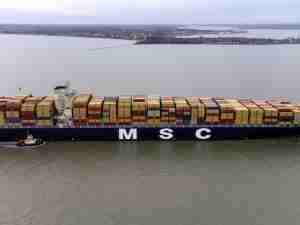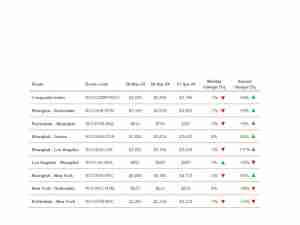I want to thank my fellow Mayor, Mayor Villaraigosa, for that kind introduction. But more importantly, I appreciate the outstanding way in which he's helping Los Angeles realize its full potential.
Good morning, everyone, and thank you very, very much for that warm welcome. I appreciate the fact that you've taken time from your busy schedules to be here for this gathering. So, let me start off by wishing the Association a "Happy 50th Anniversary!"
And I want to congratulate Thomas Kornegay, IAPH President and head of the Port of Houston, for his unflappable leadership during a rough time for our Nation's Gulf Coast area. Although the Port of Houston was not directly hit by the recent hurricanes, Tom has had a first-hand view of the impacts on the maritime sector. That's because Houston and other ports in the region continue to receive diverted cargo from the ports that were slammed by Mother Nature.
As all of us know, a vibrant maritime sector is key to creating jobs and driving economic growth.
I'm happy to say that the Gulf Coast's ports are coming back to life. The Port of New Orleans, fifth-largest in the country and gateway to the Nation's interior, opened for business earlier than expected, and hopes to return to 100 percent capacity in a few months.
With the world's attention rightfully focused on the devastation wrought by Katrina and Rita, I don't want anyone to lose sight of looming transportation challenges that have nothing to do with the weather. I'm speaking of growing trade volumes that, while indicative of a strong economy, threaten to clog our ports and their transportation connections. The effects of port congestion on the West Coast ripple across the entire world. Many of you remember all too well last year's headaches that shippers experienced at the ports of Los Angeles and Long Beach.
None of us wants a repeat of that. I commend both port authorities for working so hard to reduce the bottlenecks that threaten our economies. In particular, the implementation of PierPass, an innovative approach to reducing congestion through pricing, has had a beneficial impact on the port and surrounding communities.
Because maritime commerce is so important to international trade, it's in our best interests to stand together to confront the issues that challenge the international community. President Bush has made free and open trade a top priority, and commercial ocean links play a substantial role in his trade plans.
Recently, we signed a maritime agreement with Brazil that will not only help promote trade, but will also strengthen relations between important allies. This pact builds upon similar maritime agreements that the United States has forged with other Nations, including our largest overseas trading partner, China. And, we are in the early stages of negotiations with Vietnam on a similar agreement.
But all the maritime deals in the world will accomplish nothing unless we confront the twin challenges of capacity and congestion. We are doing just that. For example, we now have a Southern California Gateway Office in Long Beach to help us closely monitor the issues related to the movement of freight. I'd like to introduce the head of that office, Randy Rogers. Randy, please stand up.
With this one-stop shop, we want shippers and the port community to enjoy easy access to the Department of Transportation as we work together to address the critical capacity issues at the country's most vital trade gateway.
It is imperative that transportation systems support and encourage trade, not serve as a bottleneck to it. That is why we took a second look at our federal maritime policy, which, up until now, was too disjointed and too unfocused. In response, President Bush led the effort to combine twelve agencies into a stand-alone body known as the C







